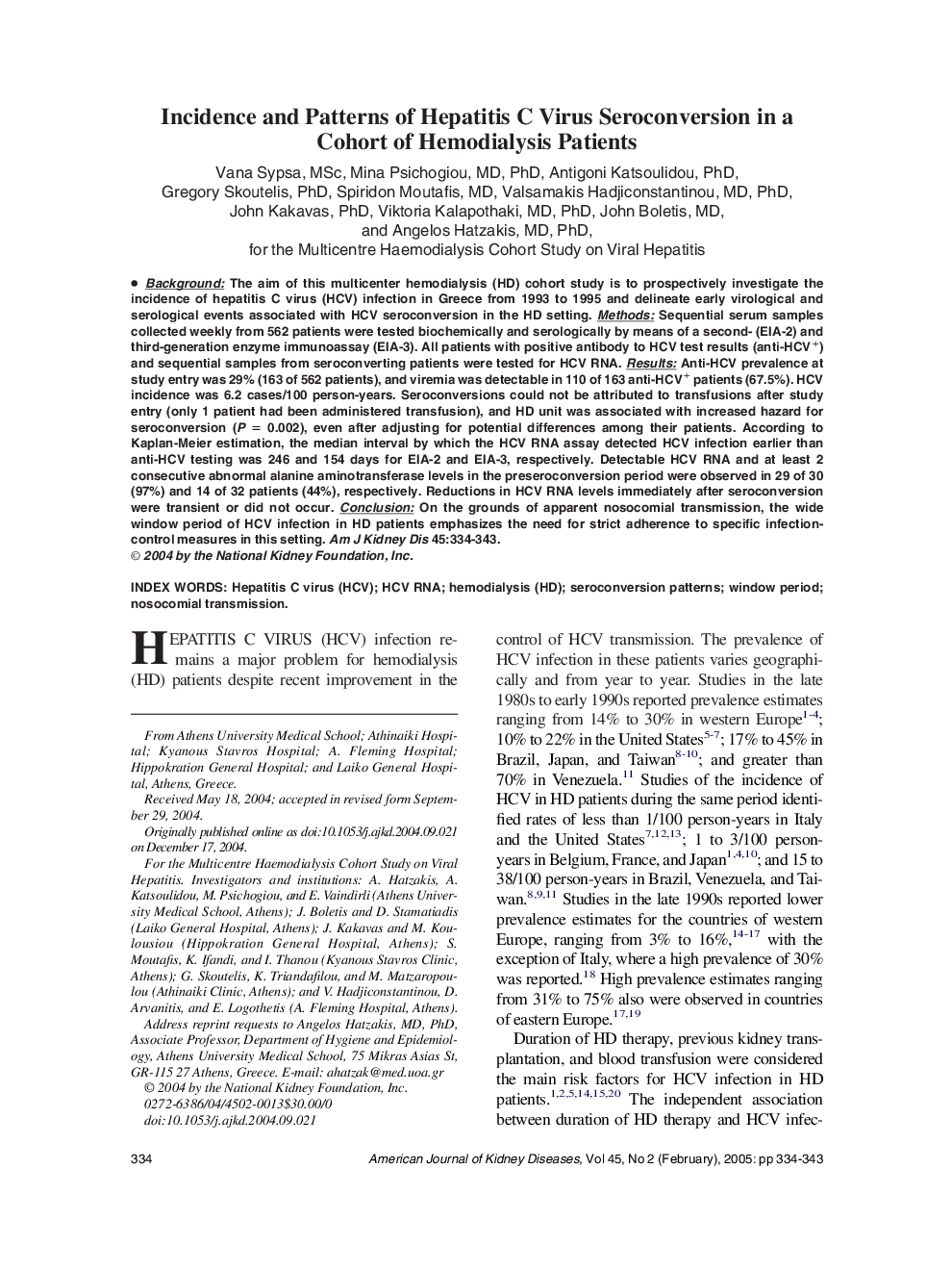| Article ID | Journal | Published Year | Pages | File Type |
|---|---|---|---|---|
| 10047729 | American Journal of Kidney Diseases | 2005 | 10 Pages |
Abstract
Background: The aim of this multicenter hemodialysis (HD) cohort study is to prospectively investigate the incidence of hepatitis C virus (HCV) infection in Greece from 1993 to 1995 and delineate early virological and serological events associated with HCV seroconversion in the HD setting. Methods: Sequential serum samples collected weekly from 562 patients were tested biochemically and serologically by means of a second- (EIA-2) and third-generation enzyme immunoassay (EIA-3). All patients with positive antibody to HCV test results (anti-HCV+) and sequential samples from seroconverting patients were tested for HCV RNA. Results: Anti-HCV prevalence at study entry was 29% (163 of 562 patients), and viremia was detectable in 110 of 163 anti-HCV+ patients (67.5%). HCV incidence was 6.2 cases/100 person-years. Seroconversions could not be attributed to transfusions after study entry (only 1 patient had been administered transfusion), and HD unit was associated with increased hazard for seroconversion (P = 0.002), even after adjusting for potential differences among their patients. According to Kaplan-Meier estimation, the median interval by which the HCV RNA assay detected HCV infection earlier than anti-HCV testing was 246 and 154 days for EIA-2 and EIA-3, respectively. Detectable HCV RNA and at least 2 consecutive abnormal alanine aminotransferase levels in the preseroconversion period were observed in 29 of 30 (97%) and 14 of 32 patients (44%), respectively. Reductions in HCV RNA levels immediately after seroconversion were transient or did not occur. Conclusion: On the grounds of apparent nosocomial transmission, the wide window period of HCV infection in HD patients emphasizes the need for strict adherence to specific infection-control measures in this setting.
Related Topics
Health Sciences
Medicine and Dentistry
Nephrology
Authors
Vana MSc, Mina MD, PhD, Antigoni PhD, Gregory PhD, Spiridon MD, Valsamakis MD, PhD, John PhD, Viktoria MD, PhD, John MD, Angelos MD, PhD, Multicentre Haemodialysis Cohort Study on Viral Hepatitis Multicentre Haemodialysis Cohort Study on Viral Hepatitis,
